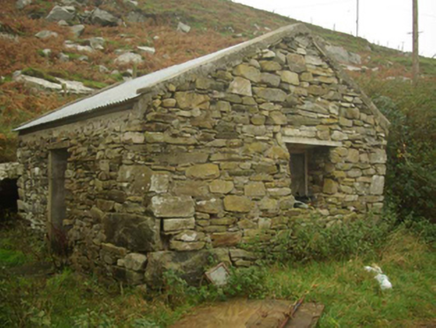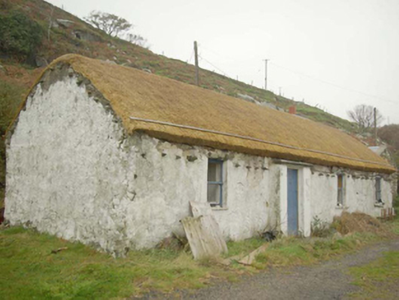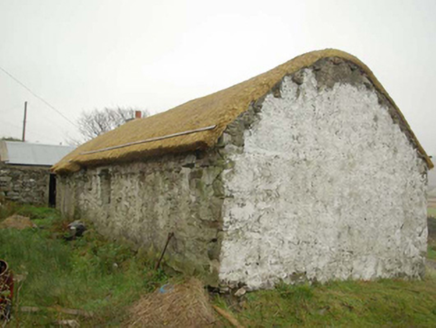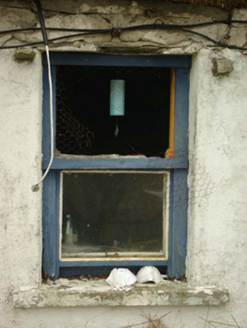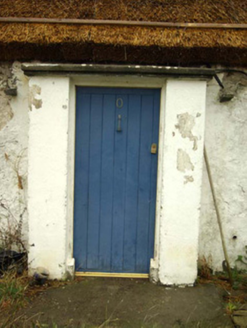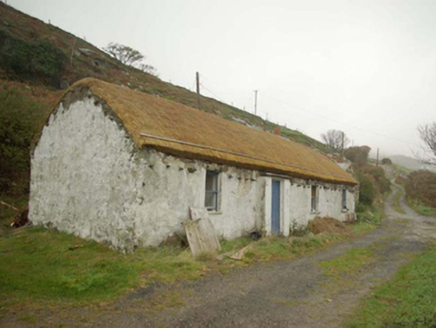Survey Data
Reg No
40841006
Rating
Regional
Categories of Special Interest
Architectural, Technical
Original Use
House
In Use As
House
Date
1840 - 1880
Coordinates
153253, 385560
Date Recorded
14/11/2007
Date Updated
--/--/--
Description
Detached four-bay single-storey vernacular house, built c. 1860, having windbreak porch to the front elevation (south) and bed outshot to the rear (south). Pitched/domed thatched roof (recently re-thatched with reed) having stone pegs below eaves level and with rendered chimneystack. Limewashed rubble stone construction. Square-headed window openings with cut stone sills and remains of one-over-one pane timber sliding sash windows. Blank elevation to rear (north). Square-headed door opening to front face of windbreak porch having battened timber door and plinth blocks. Set adjacent to rural lane to the north of Gleann Cholm Cille/Glencolumbkille. Single-bay single-storey outbuilding adjacent to the east having rubble stone walls, pitched corrugated-metal roof, and with square-headed openings having remains of timber fittings.
Appraisal
This thatched vernacular house retains its early form and character, and is an appealing feature in the rural landscape to the north of Gleann Cholm Cille/Glencolumbkille. Modest in scale, it exhibits the simple and functional form of vernacular building in Ireland having long low massing and construction in locally-sourced materials. Of particular interest in the survival of the thatch roof, although recently renewed, which is now sadly becoming increasingly rare in Donegal. The rounded roof is a typical feature of thatched houses located close to the sea in exposed areas in the north-west of Ireland, while the pegs to the eaves were used to tie ropes (and sometimes nets) over the roof to secure it against the prevailing winds. The blank rear elevation is a typical feature of many small-scale vernacular dwellings in rural Ireland, while the bed outshot to the rear is a feature that is found on many vernacular buildings in Donegal and was used to house a bed adjacent to the hearth for warmth. The form of this building suggests that it is of the 'direct-entry' type that is characteristic of the vernacular tradition in north-west Ireland. This building may have been extended to the east by a bay at some stage or perhaps, the bay to the east end was originally a byre later converted to living accommodation. This house represents a fine surviving example of a once ubiquitous building type in the rural Irish countryside, and is a valuable addition to the vernacular heritage of County Donegal.
